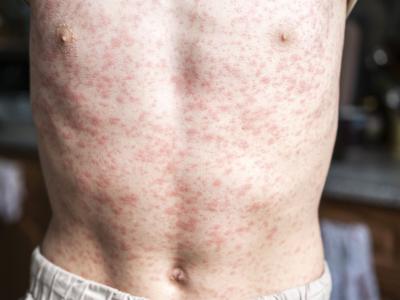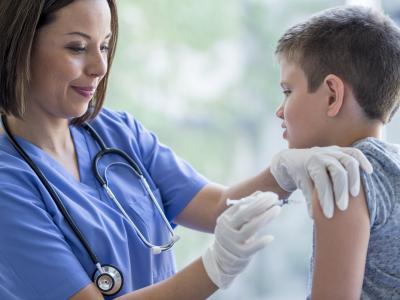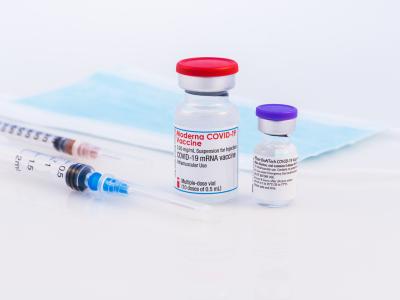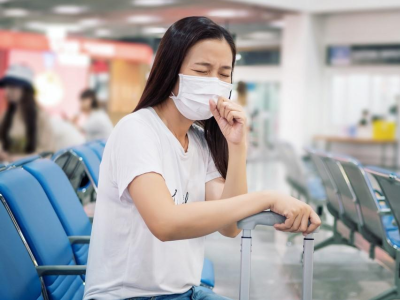Our weekly wrap-up of antimicrobial stewardship & antimicrobial resistance scans
Global group battles antimicrobial resistance with new One Health effort
The Quadripartite, a group made up of experts from the World Health Organization (WHO), the Food and Agriculture Organization of the United Nations, the UN Environment Program, and the World Organization for Animal Health, launched a new platform to tackle the antimicrobial resistance (AMR) threat to human and animal health and ecosystems called the Antimicrobial Resistance Multi-Stakeholder Partnership Platform.
The platform will take a One Health approach to confronting the challenges of bacterial AMR, which causes 1.3 million deaths worldwide each year, and AMR in livestock and other animals, on which 1.3 billion people rely on for income, especially in low- and middle-income countries.
"This platform will be vital in raising the profile and urgency of addressing AMR while building and maintaining political momentum and public support," said WHO Director-General Tedros Adhanom Ghebreyesus, PhD. "It will help to drive global coordination so that our collective response is more strategic, resource efficient and sustainable."
The platform will attempt to bring stakeholders together and on task to combat and reverse AMR in line with the Global Action Plan and National Action Plans previously published by the WHO.
Antimicrobial stewardship tied to less fluoroquinolone use
Originally published by CIDRAP News Nov 17
Implementation of an antimicrobial stewardship program (ASP) across a four-hospital health system was linked to a substantial decrease in the use of fluoroquinolones and increased susceptibility of Pseudomonas aeruginosa and Escherichia coli to levofloxacin, finds a study published yesterday in Antimicrobial Stewardship & Healthcare Epidemiology.
Kentucky-based Norton Healthcare researchers led the analysis of fluoroquinolone use and antimicrobial susceptibility among hospitalized adults in the 10 years after ASP implementation, which was spearheaded by an infectious diseases pharmacist in 2011. Each quarter from 2016 to 2020, the team calculated and reported fluoroquinolone use by days of therapy (DOT) per 1,000 patient-days. P aeruginosa and E coli susceptibility were reported from 2011 to 2020.
The ASP initially focused on formulary optimization, guidelines for optimal antimicrobial use, updates to order sets (grouping of orders to standardize and expedite drug ordering), and clinician and pharmacist education. Later, it focused on providing audit and feedback for patients who were taking broad-spectrum antimicrobials. Routine fluoroquinolone use was discouraged mainly through order-set revisions.
Fluoroquinolone use fell 74% over the 5-year period, with an average decrease of 3.45 DOT per 1,000 patient-days per quarter. Over 10 years, levofloxacin susceptibility rose 57% for P aeruginosa and 15% for E coli. On average, P aeruginosa susceptibility to levofloxacin climbed 2.7% each year and had a strong negative correlation with fluoroquinolone use. E coli susceptibility to levofloxacin rose, on average, 1.3% each year and also was negatively correlated with fluoroquinolone use.
The authors noted that antimicrobial resistance, driven by inappropriate use of antimicrobial drugs, is a public health threat. Fluoroquinolone, for example, has been widely prescribed for many different types of infections, including those that may have been more appropriately treated with an alternative drug. Fluoroquinolones, they said, are the only antibiotic class available for enteral (via the gastrointestinal tract) administration for the treatment of Pseudomonas infections.
"These results demonstrate the value of stewardship services and highlight the effectiveness of an infectious diseases pharmacist led antimicrobial stewardship program," they wrote.
Shorter regimen for resistant TB could save $740 million a year
Originally published by CIDRAP News Nov 17
An analysis yesterday by researchers with the TB Alliance, Stop TB Partnership, World Health Organization (WHO), and other groups estimates that the recently approved BPaLM/BPaL treatment regimen for drug-resistant tuberculosis (DR-TB) could save governments up to $740 million a year, enough to supply more than 400,000 people with almost a year's worth of DR-TB treatment.
The all-oral BPaLM/BPaL regimen consists of 6 months of bedaquiline, pretomanid, linezolid and moxifloxacin, with the option of dropping moxifloxacin for infections involving fluoroquinolone resistance. The therapy will be included in WHO guidelines for treating DR-TB.
The experts' analysis factored in drug costs, healthcare costs, and patient-incurred cost in arriving at their projections. In the study, published in PLOS Global Public Health, they estimate that the cost of implementing the regimen is 40% to 90% less expensive than current drug courses, even without including patient-incurred costs.
According to WHO data cited in a TB Alliance news release, an estimated 440,000 people every year contract DR-TB. Before this new regimen, DR-TB treatment lasted 18 months or longer and included a complex cocktail of medicines that was hard to tolerate. Shorter regimens that lasted 9 to 11 months were found to be effective several years ago, but even then, more than 40% of patients were unable to complete treatment.
"TB is a difficult disease to cure, requiring a combination of medicines that all have different ways of eliminating a bacterium that is absolutely tenacious," said Sandeep Juneja, MBA, a co-author and Senior Vice President, Market Access, of TB Alliance. "The significant savings generated by switching to short therapies will help health systems bridge the gap in TB care."
Coauthor Saurabh Rane, a member of Survivors Against TB in Mumbai, India, added, "The new regimen can save patients both time and suffering. The faster TB patients can return to health, the better it is for everyone."
Intervention tied to shorter antibiotic courses for kids with skin infections
Originally published by CIDRAP News Nov 15
A quality improvement intervention implemented at three pediatric urgent care clinics (UCCs) resulted in more children with skin and other soft-tissue infections (SSTIs) receiving the recommended course of antibiotics, researchers reported today in Pediatrics.
After an evaluation of antibiotic use at the three pediatric UCCs found that only 60% of the children with SSTIs received the recommended 5 to 7 days of antibiotics, with the other 40% receiving more than 7 days, researchers with Children's Mercy Hospital in Kansas and the University of Missouri Kansas City surveyed providers to better understand factors contributing to longer antibiotic durations. They then developed a Plan-Do-Study-Act (PDSA) intervention that included three cycles.
Cycle 1 focused on educating providers about shorter antibiotic courses, cycle 2 included modifying the electronic health record to display antibiotic orders from shortest to longest duration, and cycle 3 provided project outcome and balancing measure updates to providers.
To assess the impact of the intervention, the researchers created monthly reports on patients with SSTIs from July 2020 to December 2021. The primary outcome was the percentage of patients receiving 5 to 7 days of oral antibiotics for SSTIs.
During the study period, 2,746 patient encounters for SSTIs occurred, of which 2,146 met the criteria for inclusion. After the three PDSA cycles were completed, the percentage of children receiving 5 to 7 days of antibiotics had risen from the baseline of 60% to 86%, and the improvement was sustained through May 2022. In addition, there was no increase in the proportion of patients returning to the UCCs with an SSTI diagnosis because of treatment failure.
"Our project serves as a model for other institutions seeking to improve their antibiotic durations for SSTIs and other diagnoses for which antibiotics are indicated," the study authors concluded.
GSK reports positive phase 2 results for new TB drug
Originally published by CIDRAP News Nov 15
British drugmaker GSK announced yesterday that its investigational tuberculosis (TB) drug produced positive results in a phase 2a study.
GSK said the results of the single-center, open-label trial showed that GSK3036656, a first-in-class antitubercular agent that suppresses protein synthesis in Mycobacterium tuberculosis, demonstrated early bactericidal activity and was well tolerated after 14 days in patients with drug-sensitive pulmonary TB. The trial involved four cohorts of 12 to 20 patients who were randomized to receive 1, 5, 15, or 30 milligrams (mg) of GSK3036656 or the standard-of-care drug.
Anti-mycobacterial activity for doses of 5 to 30 mg was demonstrated in terms of reducing the number of viable TB cells and an increase in the time to detect bacterial growth in culture. Positron emission tomography also showed a reduction in TB disease in participants who received 30 mg.
Company officials say the findings suggest GSK3036656 could be part of a shorter and simpler TB treatment regimen.
"Existing treatments for TB can be complicated, of long duration and have serious side effects which significantly impact the lives of patients with TB around the world," David Barros-Aguirre, PhD, GSK's Head of Global Health Medicines R&D, said in a company press release. "Today's encouraging data provide a good foundation from which to investigate GSK3036656 in different combinations in Phase IIb/c studies, with the aim of contributing to shorter, simpler and better tolerated treatment regimens for patients with TB."













